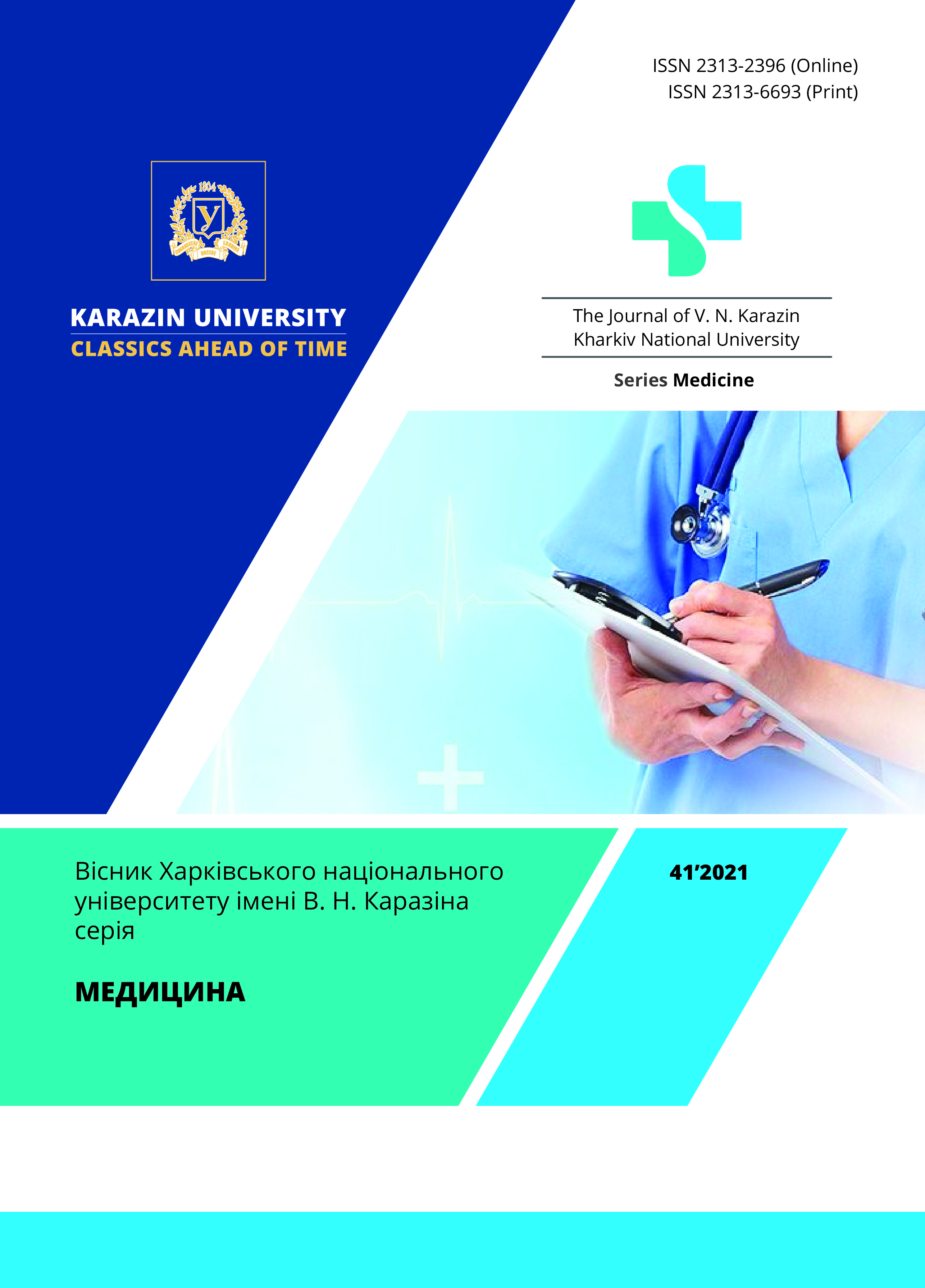Study of etiology and antibiotic sensitivity of leading pathogens of postoperative infectious complications
Abstract
Summary. The problem of treatment and prevention of postoperative purulent complications in abdominal surgery in our time remains extremely urgent. This is due to an increase in the number of complex operations using modern technologies, an increase in the volume and duration of surgical interventions, as well as current antibiotic resistance problems.
Objective: to study the structure of the leading causative agents of perioperative infectious complications in patients with surgical pathology and study their antibiotic sensitivity.
Materials and methods - 576 patients, the average age of 45 ± 10.5 years, took part in the investigation, who were treated in the departments of surgery and intensive care unit of medical institutions of Vinnitsa region. A microbiological study of materials collected from patients was carried out (selection of secretions, fluid during drainage of superficial and deep surgical wounds). From the obtained biological material, a pure culture of the pathogen was isolated with its identification by morphological, tinctorial, cultural and biochemical properties according to generally accepted microbiological methods and using the Vitec automatic bacteriological analyzer (France). And a comparison was made of the profile of the sensitivity of the most significant pathogens to modern antibiotics.
Results. According to the results of the study, it was revealed that the most common pathogens of surgical wound infections include opportunistic bacteria E.coli (22.0 %), S.aureus (19.0 %), S.epidermidis (13.0 %), E .faecalis (15 %), P.aeruginosa (10.0 %), A.baumanii (11.3 %). An analysis of the sensitivity to antibiotics of various classes of studied strains of the dominant causative agents of perioperative infectious complications showed that β-lactam antibiotics (meropenem (75–100 %), cefepime (65–100 %) and fluoroquinolones chemotherapeutic agents had the greatest antimicrobial activity. A slightly lower antimicrobial activity was found for third generation cephalosporins (70–85 %), amoxicillin-clavulanate (40–75%), aminoglycosides (tobramycin – 80 %, amikacin – 40 %). A high level of resistance of most grams of (-) microorganisms to ampicillin-sulbactam, cephalosporins of I–II generations in different ratios was determined. S.aureus resistance to azithromycin, clarithromycin is shown.
Conclusions: the high prevalence of multiresistant isolates of pathogens (gram-positive (Staphylococcus aureus, enterococci), gram-negative pathogens (Escherichia, Klebsiella, enterobacteria, acinetobacteria, pseudomonads) emphasizes the need for dynamic microbiological monitoring in the surgical departments and the use of alternative antimicrobial drugs only.
Downloads
References
Levy SB, Marshall B. Antibacterial resistance worldwide: causes, challenges and responses. Nat Med. 2004; 10 (12): 122–129. https://doi.org/10.1038/nm1145. PMID: 15577930.
Watanabe A, Kohnoe S, Shimabukuro R. et al. Risk factors associated with surgical site infection in upper and lower gastrointestinal surgery. Surgery today. 2008; 38: 404–412. https://doi.org/10.1007/s00595-007-3637-y
Owens CD, Stoessel K. Surgical site infections: epidemiology, microbiology and prevention. The Journal of Hospital Infection. 2008; 70 (2): 3–10. https://doi.org/10.1016/S0195-6701(08)60017-1
Cristea OM, Zlatian OM, Dinescu SN, et al. A Comparative Study on Antibiotic Resistance of Klebsiella Strains from Surgical and Intensive Care Wards. Current Health Sciences Journal. 2016; 42 (2): 169–179. https://doi.org/10.12865/CHSJ.42.02.09
Dulon M, Haamann F, Peters C, Schablon A, Nienhaus A. MRSA prevalence in European healthcare settings: a review. BMC Infectious Diseases. 2011; 11:138. https://doi.org/10.1186/1471-2334-11-138
Awad SS. Adherence to surgical care improvement project measures and post-operative surgical site infections. Surgical Infections. 2012: 13 (4); 234–237. https://doi.org/10.1089/sur.2012.131
Călina D, Docea AO, Rosu L, et al. Antimicrobial resistance development following surgical site infections. Molecular Medicine Reports. 2017;15(2):681-688. https://doi.org/10.3892/mmr.2016.6034
Nazarchuk AA, Nazarchuk GG, Paliy DV, Gonchar OO, Bereza BN., Oliynyk DP, Zaderey NV. The research of pathogens’ sensitivity to modern antimicrobial medicines at purulent inflammatory diseases. Journal of ear, nose and throat diseases. 2014; 1: 52–57. http://lorlife.kiev.ua/2014/2014_1_52.pdf
Desyateryk VI, Kotov OV, Teliga PG, Savchenko TI. Fragment of the all—ukrainian investigation of the microflora sensitivity to antibacterial preparations in the patients, suffering intraabdominal surgical infection. Klinichna khirurhiia.2011; 6: 38 – 40. URL: https://hirurgiya.com.ua/index.php/journal/issue/view/37/6-2011
The Journal of V. N. Karazin Kharkiv National University, series Medicine has following copyright terms:
- Authors retain copyright and grant the journal right of first publication with the work simultaneously licensed under a Creative Commons Attribution License that allows others to share the work with an acknowledgement of the work’s authorship and initial publication in this journal.
- Authors are able to enter into separate, additional contractual arrangements for the non-exclusive distribution of the journal’s published version of the work, with an acknowledgement of its initial publication in this journal.
- Authors are permitted and encouraged to post their work online prior to and during the submission process, as it can lead to productive exchanges, as well as earlier and greater citation of published work.




